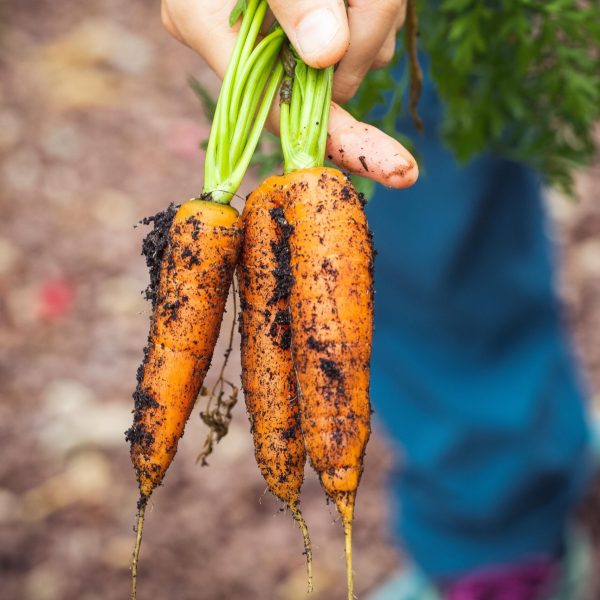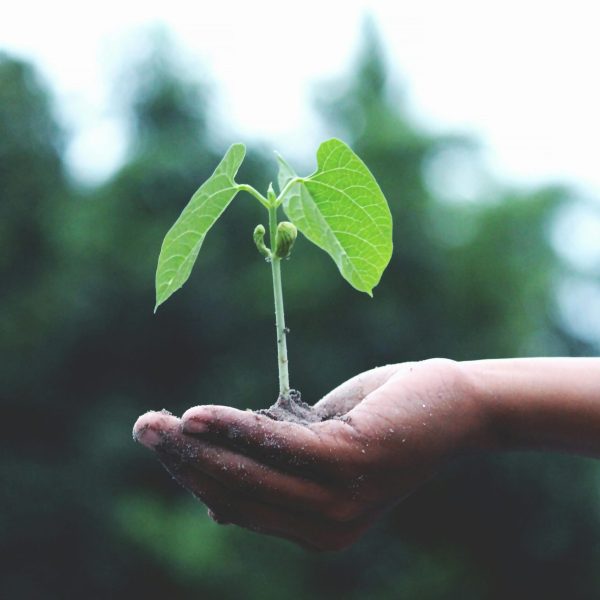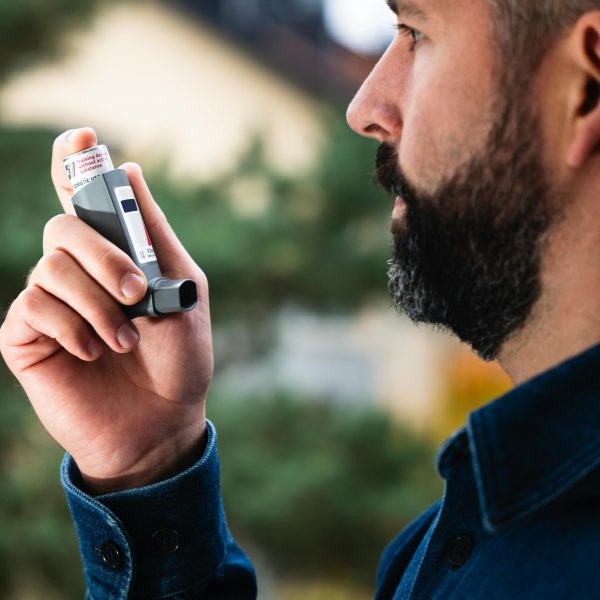Handling your produce
Correctly
Delivering top-quality, fresh produce to local buyers is key to building strong relationships. By harvesting at the right time, handling with care, using sustainable packaging, and following food safety guidelines, you ensure chefs receive the best of your homegrown crops while keeping your environmental impact low.
By following these food safety measures, you help to ensure that your produce is not only fresh and sustainable but also safe for all customers, including those with allergies.
By implementing these best practices, you’ll deliver UK-grown produce that is fresh, sustainable, safe, and free from plastic waste. Customers will appreciate your commitment to quality, environmental responsibility, and food safety.
01.
Harvesting: Timing & Best Practices
To maximise freshness, harvest within 24 hours of a confirmed sale on the platform.
- Harvest early in the morning to retain moisture and prevent wilting.
- Use clean, sharp tools (knives, secateurs, or scissors) to make precise cuts and protect plant health.
- Handle produce gently to minimise bruising

02.
Sustainable, Plastic-Free Packaging for Delivery
Sustainable packaging is essential for reducing waste and ensuring your produce stays fresh while being eco-friendly.
Best Packaging Alternatives:
- Hessian or jute bags. Perfect for root vegetables and leafy greens.
- Beeswax wraps. A natural, breathable alternative to plastic for herbs and soft vegetables.
- Paper bags. Ideal for mushrooms, courgettes, and leafy greens.
- Wooden crates or wicker baskets. Great for bulkier produce like pumpkins and squash.
- Cardboard punnets. Best for berries, tomatoes, and small fruits.

03.
Labelling and Presentation
- Handwritten paper labels or stamped biodegradable stickers help chefs track harvest dates.
- No plastic tape or wrapping, use twine or paper ties instead.
- Encourage returns. If using reusable crates, ask restaurants to return them for future deliveries.

04.
Avoiding Cross Contamination
To ensure your produce remains safe for consumption, it’s important to store and transport it correctly, avoiding potential contamination from allergens and other food sources.
- Never store produce near raw meat, fish, or dairy products. These can introduce harmful bacteria.
- Wash hands and tools thoroughly before and after handling produce to prevent the spread of allergens or contaminants.
- Keep fresh produce in dedicated storage areas, do not use containers or surfaces that have been used for allergens like nuts, dairy, or gluten-containing foods.
- Use separate, clean containers for each type of produce to avoid cross-contact.

05.
Common Allergens To Consider
While fruit and vegetables themselves are not major allergens, cross-contamination can occur if they come into contact with:
- Nuts and seeds. Avoid using shared storage with nut-based products.
- Gluten (wheat, barley, rye, oats) If you grow grains or store near bakery products, be mindful of contamination.
- Dairy products. Some soft fruits and herbs may be stored near dairy in restaurant kitchens; keeping them separate reduces risk.
- Celery and mustard. These are listed allergens in the UK and should be handled with care.

06.
Safe storage and transport tips
- Use designated, food-safe storage areas that are free from allergens and contaminants.
- Label all containers clearly to help restaurants identify produce and prevent cross-contamination.
- Deliver produce in secure, covered containers to protect against exposure to allergens during transport.

Crop specific harvesting advice:
Leafy Greens and Herbs (e.g, Lettuce, Kale, Chard, Basil, Coriander, Parsley)
- Cut cleanly at the base, leaving enough for regrowth where applicable.
- Avoid washing before storage excess moisture can cause rot.
Brassicas (e.g, Cabbage, Cauliflower, Broccoli, Brussels)
- Harvest cabbages and cauliflower when heads are firm and tight.
- Cut broccoli when florets are tightly closed, yellowing means it’s overripe.
- Pick Brussels sprouts from the bottom up as they mature.
Root Vegetables (e.g, Carrots, Beetroot, Parsnips, Radishes, Turnips)
- Loosen soil before pulling to avoid snapping roots.
- Cut off leafy tops to prevent moisture loss but leave a small stub.
- Brush off excess soil rather than washing, moisture speeds up spoilage.
Soft Fruits (e.g, Strawberries, Raspberries, Blackberries, Gooseberries)
- Pick berries when fully ripe for the best flavour.
- Avoid picking when wet to prevent mould.
Vine Crops (e.g, Courgettes, Cucumbers, Pumpkins, Squash)
- Harvest courgettes young for the best texture and flavour.
- Leave a small stem attached to pumpkins and squash to extend shelf life.
Alliums (e.g, Onions, Garlic, Leeks, Spring Onions)
- Harvest onions and garlic once the leaves start yellowing, cure in a dry space before storage.
- Leeks and spring onions can be pulled as needed but should be rinsed before storage.
Storage Guidelines by produce type:
Leafy Greens and Herbs (e.g, Lettuce, Kale, Chard, Basil, Coriander, Parsley)
- Ideal Storage Temperature: 1-4 celsius (Fridge) Except Basil which should be stored at room temperature.
- Best Storage Method: Wrapped in damp, reusable cloth or paper bags
Brassicas (e.g, Cabbage, Cauliflower, Broccoli, Brussels)
- Ideal Storage Temperature: 1-4 celsius (Fridge)
- Best Storage Method: Breathable Wooden Trays
Root Vegetables (e.g, Carrots, Beetroot, Parsnips, Radishes, Turnips)
Ideal Storage Temperature: 0-4 Celsius (Cool Storage, not fridge)
Best Storage Method: Unwashed in hessian sacks or breathable wooden crates
Keep in a dark, cool environment
Soft Fruits (e.g, Strawberries, Raspberries, Blackberries, Gooseberries)
- Ideal Storage Temperature: 1-4 celsius (Fridge)
- Best Storage Method: Cardboard punnets or wooden trays
- Do not wash until use
Vine Crops (e.g, Courgettes, Cucumbers, Pumpkins, Squash)
- Ideal Storage Temperature: Courgettes and Cucumbers 10-12 celsius (Cool Room) Pumpkins and Squash 10-15 celsius (Dry Storage)
- Best Storage Method: Courgettes, Cucumbers, Tomatoes Wrapped in beeswax wraps or paper. Pumpkins and Squash in a cool, dry space on wooden shelving
- Store off the ground and avoid refrigeration to maintain texture
Alliums (e.g, Onions, Garlic, Leeks, Spring Onions)
- Ideal Storage Temperature: Onions and Garlic 5-10 celsius (Dry storage) Leeks and Spring Onion 1-4 celsius (Fridge)
- Best Storage Method: Onions and Garlic in mesh bags, wicker baskets or crates. Leeks and Spring Onions in Beeswax wraps or paper
- For Onion and Garlic cure before storage for longer shelf life